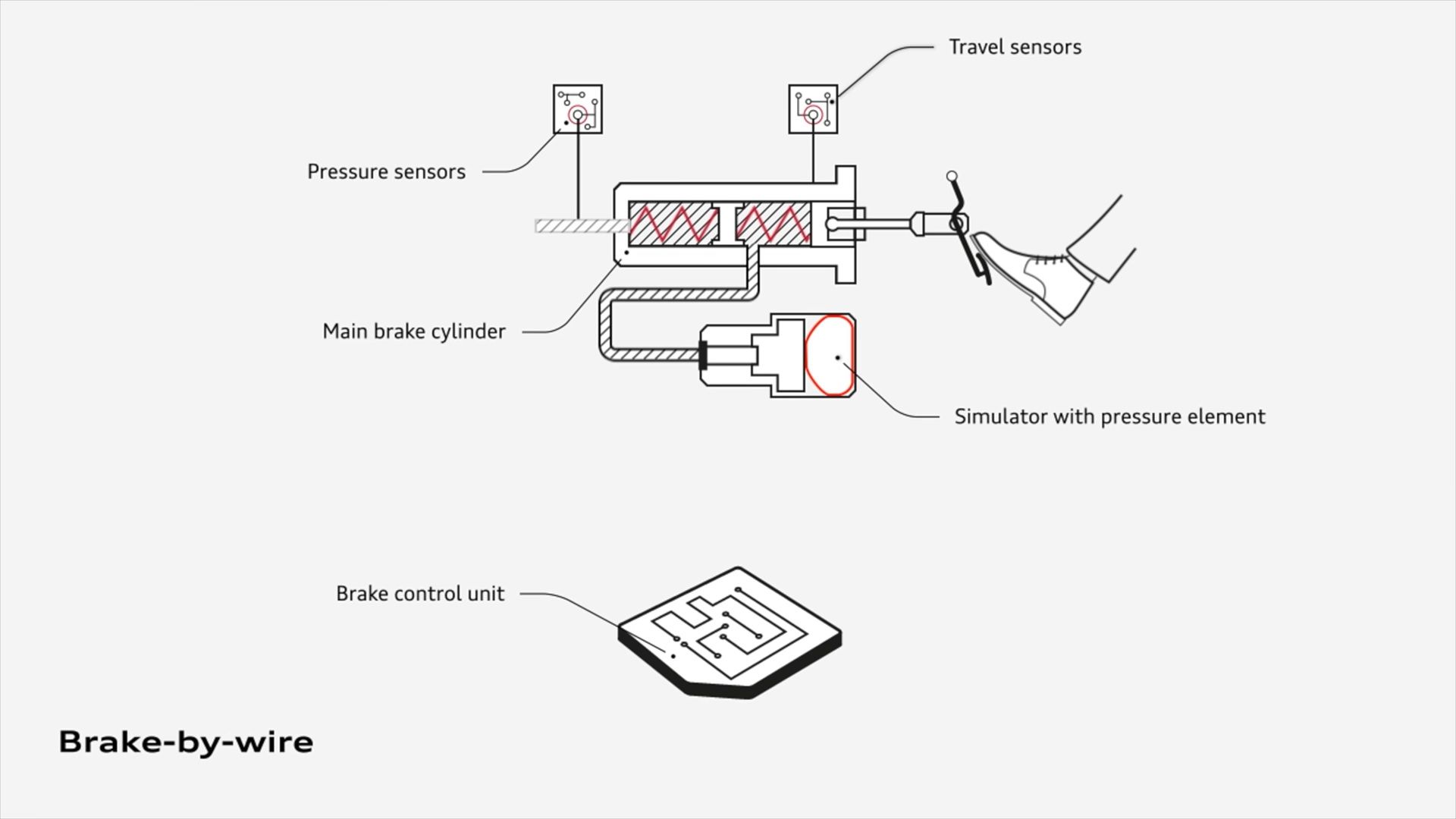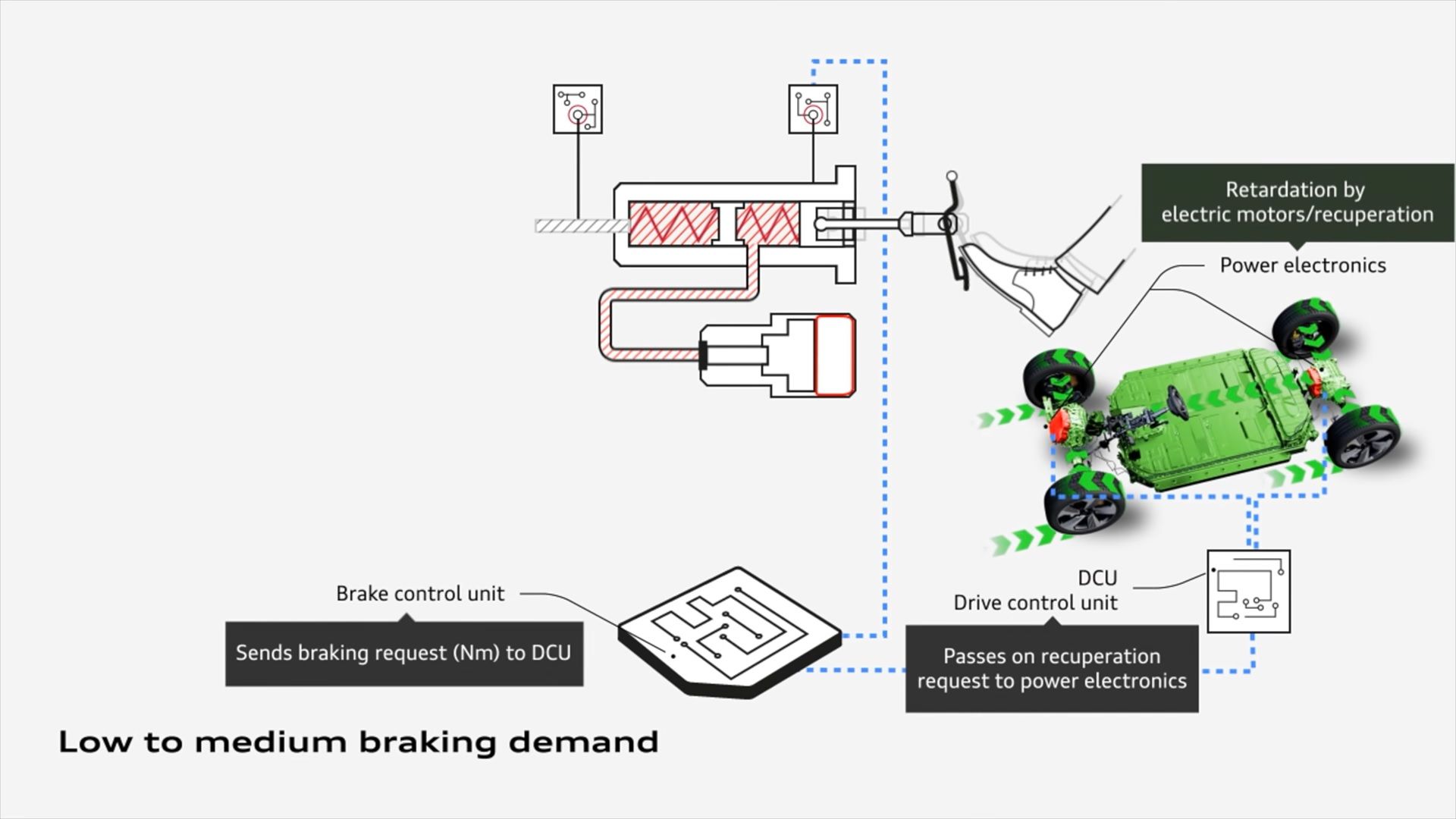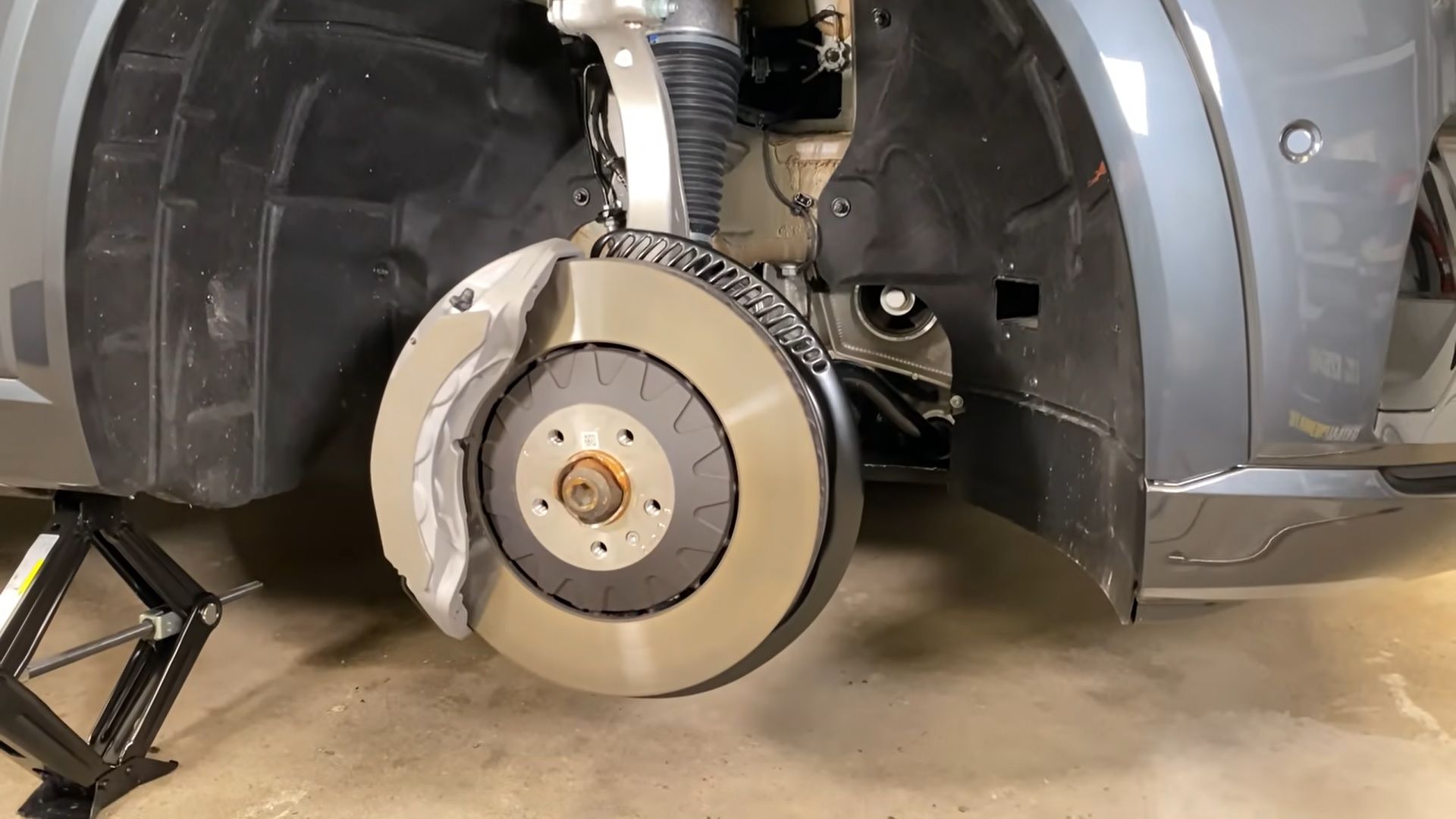The new Chevy Corvette C8 Stingray uses brake-by-wire but the feature is more common to EVs and hybrids, because it lets the car's powertrain recuperate energy during braking, as the b-pedal controls both traditional friction braking - via the car's discs and calipers - and regen braking. How such a system works can confuse a lot of people, so here's a neat explanation.
Jason Fenske details that carmakers sometimes resort to a brake-by-wire system because one of its main advantages is safety, as the car has more control over the brakes. Of course, in the C8's case, you need all the stopping power you can get to keep its raucous V-8 in check, but that's a slightly different story. Coming back to the safety aspect, a brake-by-wire setup will be able to control the braking pressure on each wheel, thus adding more composure and stability as you slam the brake pedal hard.
To illustrate how brake-by-wire works, Fenske uses Audi's e-tron, which is a 2.5-ton luxo-barge fitted with a huge battery pack that also needs to stop efficiently to be deemed safe, just like any other car on the road. Essentially, in a brake-by-wire setup, a sensor monitors how far you've pressed the brake pedal during a braking event. Collected info goes to a control unit that's so smart that it can tell just how much hydraulic pressure is required and instantly commands an electric pump to create that pressure needed to slow down/stop the vehicle.
Now you might be wondering, right, what if this system malfunctions or fails entirely? What happens then? Fenske goes on to explain that a brake-by-wire setup still maintains a physical connection between the pedal and the brakes, so in the event of a failure, a safety valve opens up and cuts off the electronics, basically leaving you safety-netted by the traditional hydraulic brake system.
In case that's not enough to make you trust brake-by-wire technology, check out Engineering Explained's video below. You'll come out with a lot more peace of mind from watching it, we promise.



